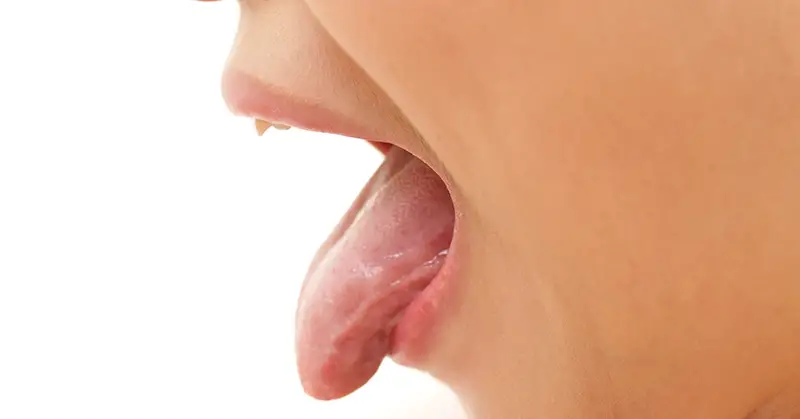Your body often sends you subtle signals when something isn’t quite right. The trouble is, if you don’t know what to watch out for, these signs can go unnoticed until the problem becomes more severe. One area where signs of an underlying health condition might show up is your tongue. You may not realize it, but your tongue health can actually tell you a lot about what’s going on in your body.
When it comes to our physical well-being, our tongue health is not often the first thing we think about. Changes in the look and feel of your tongue, however, could be an early sign of another health issue.
While some of these issues are rather small and easy to fix, some could be much more serious. If you notice any of the following changes to your tongue, you may want to consider calling your doctor.
Editor’s Note: This article was originally published in September 2020 and has since been updated.
1. Strawberry Tongue
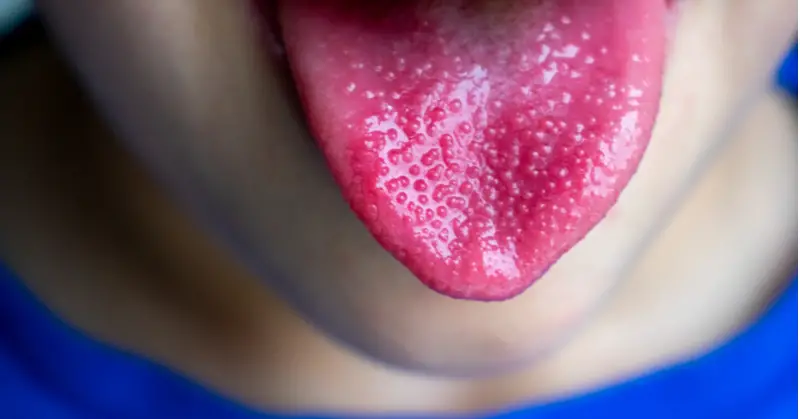
This term describes a tongue that is swollen and bumpier than usual. Typically, the tongue will be red, although sometimes it could appear white. The bumps on the surface may make it look like a strawberry or raspberry.
Strawberry tongue could be a sign of one of the following health conditions [1]:
- Kawasaki disease. This is a condition that causes certain arteries to become inflamed. It typically affects children.
- Scarlet fever. Scarlet fever is a bacterial infection that may develop when a person has strep throat. It occurs most often in children between the ages of five and fifteen.
- A food or drug allergy. A swollen tongue could be the result of inflammation caused by an allergic reaction.
- Toxic shock syndrome. TSS is a rare complication from using tampons or nasal gauze packing. The bacterium Staphylococcus aureus usually causes it, but other bacteria can as well.
- Vitamin B12 deficiency. If you are not getting enough vitamin B12 in your diet, it could cause strawberry tongue.
- Multisystem Inflammatory Syndrome in Children (MIS-C). This is a rare syndrome that can occur in children infected with COVID-19. While most children who get COVID-19 have a mild or asymptomatic illness, there are reports that some children may have this complication that can be severe and dangerous [8].
If you develop strawberry tongue, you should speak to a doctor who can diagnose the underlying condition. Some of them, such as a B12 deficiency, can be fixed very easily. Others, however, such as toxic shock syndrome, are much more serious.
If you think you have Toxic shock syndrome or are having an acute allergic reaction, you should seek emergency medical care immediately [1].
2. Black Hairy Tongue
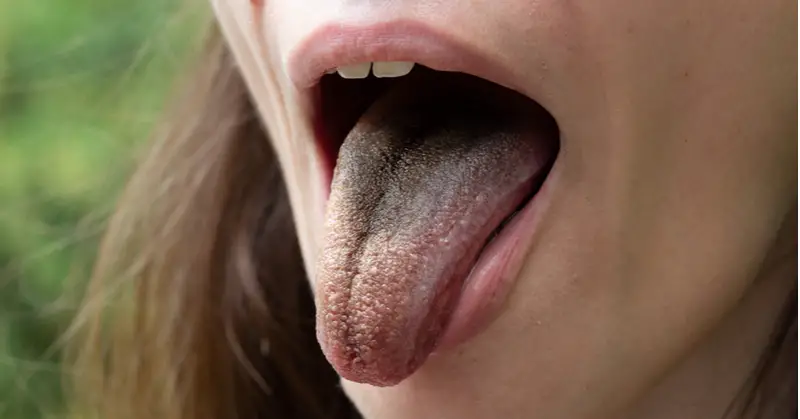
Although it may look alarming, black hairy tongue is actually a harmless condition. It is usually temporary and painless. The black, hairy look is from a buildup of dead skin cells on the papillae (tiny projections) on the surface of the tongue.
These papillae, however, are longer than normal. This means they can easily trap food, bacteria, yeast, tobacco, or other substances. This can alter your ability to taste somewhat, and may also cause bad breath.
Possible causes or contributing factors of black hairy tongue include:
- Changes in the normal bacteria or yeast content of the mouth after antibiotic use
- Poor oral hygiene
- Dry mouth (xerostomia)
- Regular use of mouthwashes containing irritating oxidizing agents, such as peroxide
- Tobacco use
- Drinking excessive amounts of coffee or black tea
- Excessive alcohol use
- Eating a soft diet that doesn’t help to rub dead skin cells from your tongue
You can usually solve the issue by eliminating any causes, and practicing good oral hygiene. Of course, see your doctor if you are concerned, especially if it doesn’t resolve itself after you’ve improved your oral hygiene [2].
3. White Plaque on your Tongue
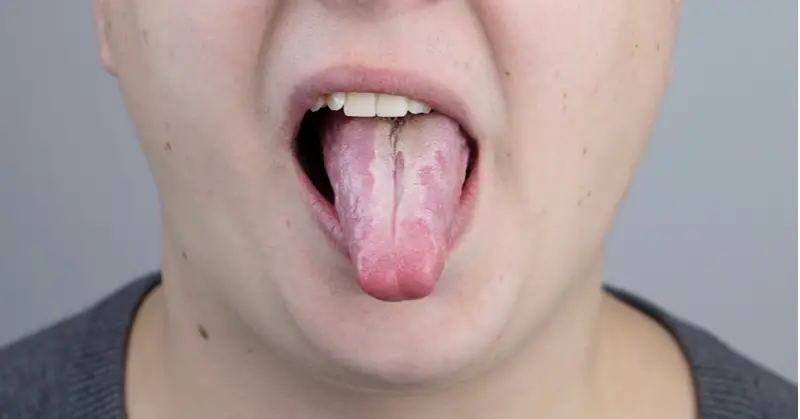
This happens when the papillae on your tongue swell. Debris, bacteria, and dead cells that get lodged between the papillae make the tongue appear to have a white coating. The condition is also called papillae hypertrophy or inflammation. It could be caused by any of the following:
- Poor oral hygiene
- Dry mouth
- Dehydration
- Smoking or other oral tobacco use
- Alcohol use (excessive)
- Mouth breathing
- Low roughage diet (eating mostly soft or mashed foods)
- Mechanical irritation from sharp tooth edges or dental appliances
- Fever
This could simply be an oral yeast infection, or it could be a sign of something more serious. If you notice a lot of white plaque on your tongue, you should go see a doctor [3].
4. Geographic Tongue
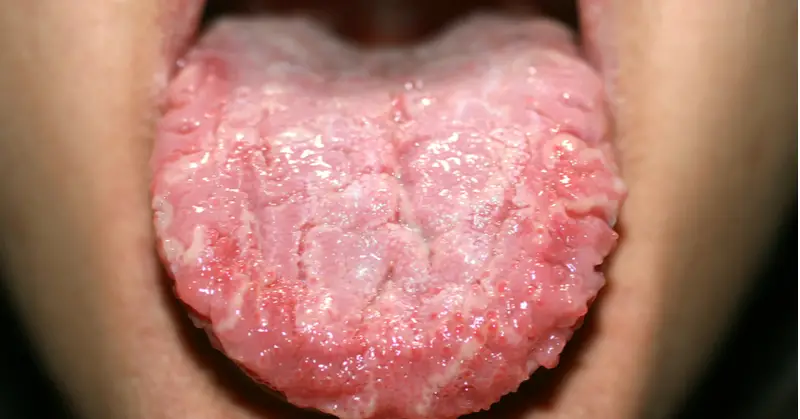
This is when the tongue has smooth, reddish patches surrounded by white borders. This gives it a map-like pattern, hence the name.
Geographic tongue does not cause any long-term health conditions. It is not contagious, and most people have no symptoms. Some may feel a burning or tingling sensation on their tongue, but typically no treatment is necessary.
People who have psoriasis Reiter’s Syndrome are more likely to have a geographic tongue. Women who are taking hormonal birth control are also more likely to have it. Other causes could be a vitamin deficiency, such as zinc, iron, folic acid, or B6 and B12, diabetes, allergies, or emotional stress.
Geographic tongue can come and go, and it could last for weeks or years. If you’re concerned, speak with your doctor [4].
5. Thrush
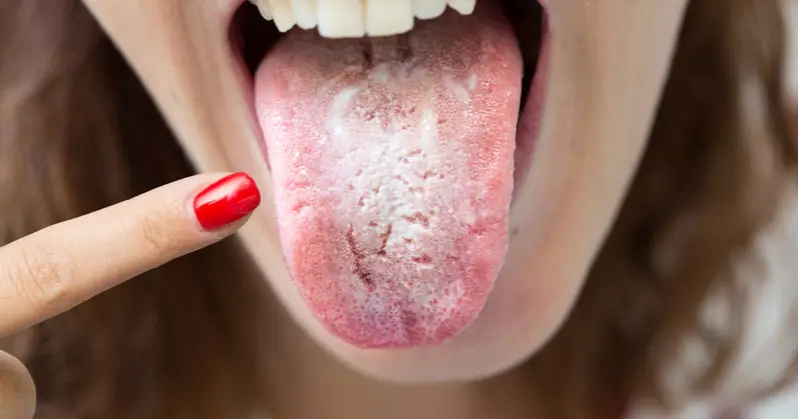
Oral thrush, or Oral Candidiasis, occurs when the fungus Candida albicans accumulates on the lining of your mouth. Candida is normally present in your mouth, but sometimes it can overgrown.
Creamy white lesions on your tongue are usually a sign of oral thrush. You may also notice them on the inner lining of your cheeks, the roof of your mouth, your gums or tonsils, or the back of your throat.
If you have a healthy immune system, oral thrush is usually a minor problem. It can become more of an issue, however, for people who are immunocompromised. For these people, oral thrush can lead to a more serious systemic candida infection.
You can prevent oral thrush by practicing good oral hygiene, avoiding high-sugar foods, maintaining good blood sugar if you have diabetes, and treating conditions like dry mouth and vaginal yeast infections [5].
6. Lichens Planus
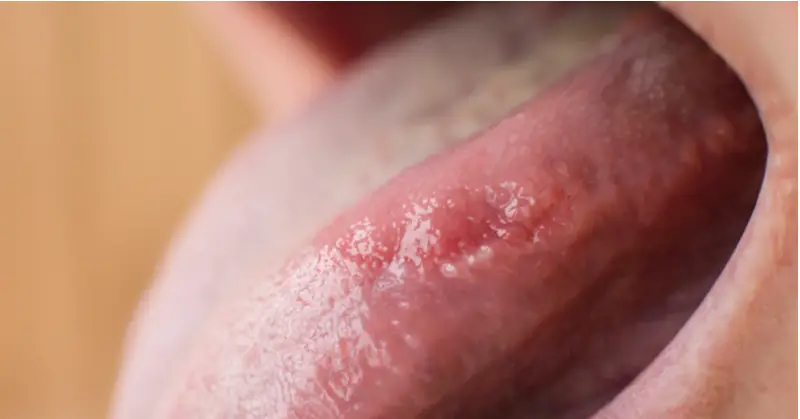
Oral lichen planus is a chronic inflammatory condition affecting the mucous membranes inside your mouth. This may result in white lacy patches, red swollen tissues, or open sores on your tongue or inside of your mouth.
This condition is not contagious and usually occurs when the immune system attacks the cells of the oral mucous membrane. It can cause a painful, burning feeling, make you more sensitive to hot or cold temperatures, or cause discomfort when speaking, chewing, or swallowing.
Experts do not know what causes lichen planus, but if you notice it starting to develop, you should speak with your doctor. It could put you at greater risk for developing mouth cancer, and your doctor will want to monitor it closely [6]
7. Blisters
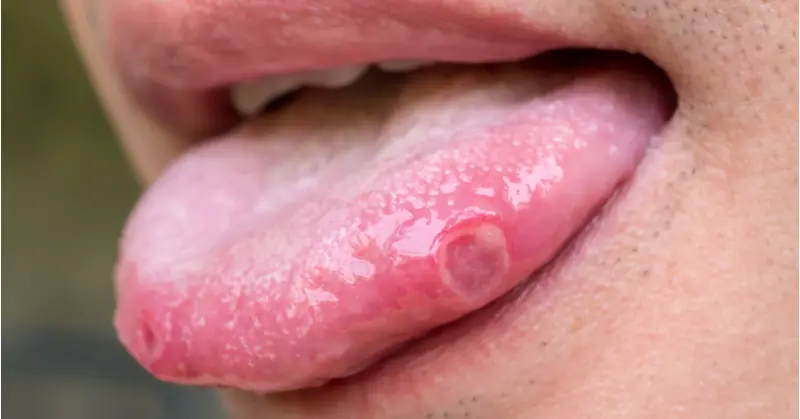
If you develop blisters on your tongue that do not seem to be going away, you should talk to your doctor. They could be a sign of mouth cancer. Other symptoms of oral cancer include:
- an unusually whitish or reddish patch of skin in the mouth
- growths or lumps in the mouth
- loose teeth
- numbness in the face or neck
- problems chewing or swallowing
- difficulty speaking
Even if you don’t have any of these other symptoms, you should have your tongue looked at. If it is an early sign of cancer, the sooner you are diagnosed the better chance you have at beating it [7].
Pay Attention to Your Tongue Health
There are many health conditions that could present symptoms on your tongue and in your mouth. Some of them may be minor and easy to treat, but some could be life-threatening.
If you notice any changes in the appearance or feeling of your tongue, talk to your doctor right away.
Keep Reading: 50 Weird Signs That Lead To a Cancer Diagnosis
Sources
- “What you should know about strawberry tongue.” Medical News Today. Lana Burgess. February 12, 2018
- “Black hairy tongue.” Mayo Clinic.
- “White tongue.” Mayo Clinic.
- “Geographic Tongue.” Cleveland Clinic.
- “Oral thrush.” Mayo Clinic.
- “Oral lichen planus.” Mayo Clinic
- “Blisters on the tongue: Identification and when to see a doctor.” Medical News Today. Jon Johnson. August 31, 2020
